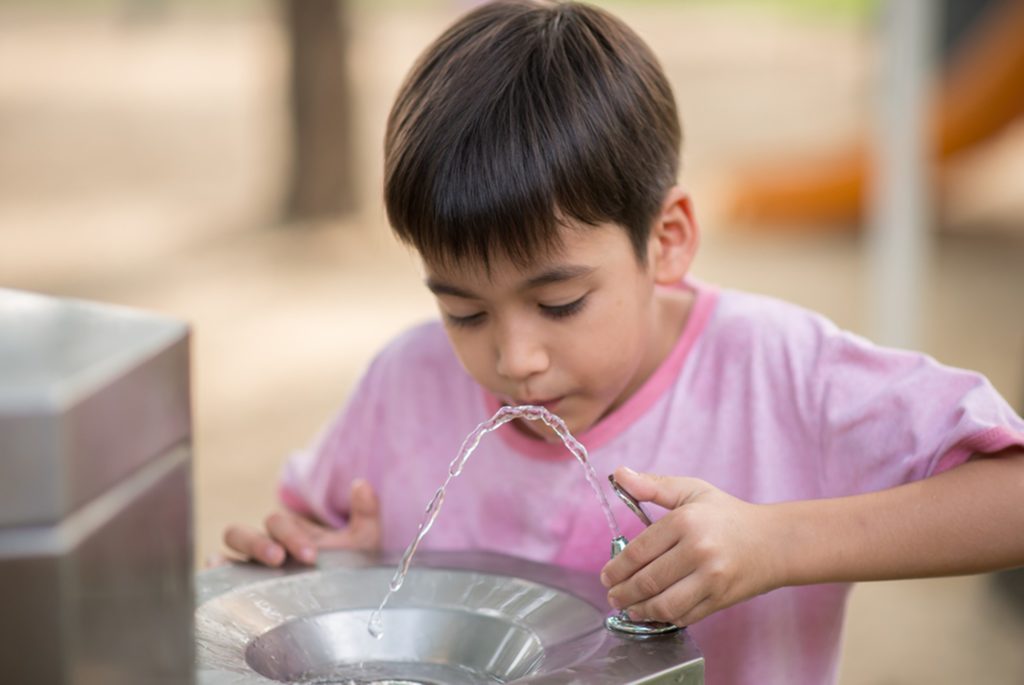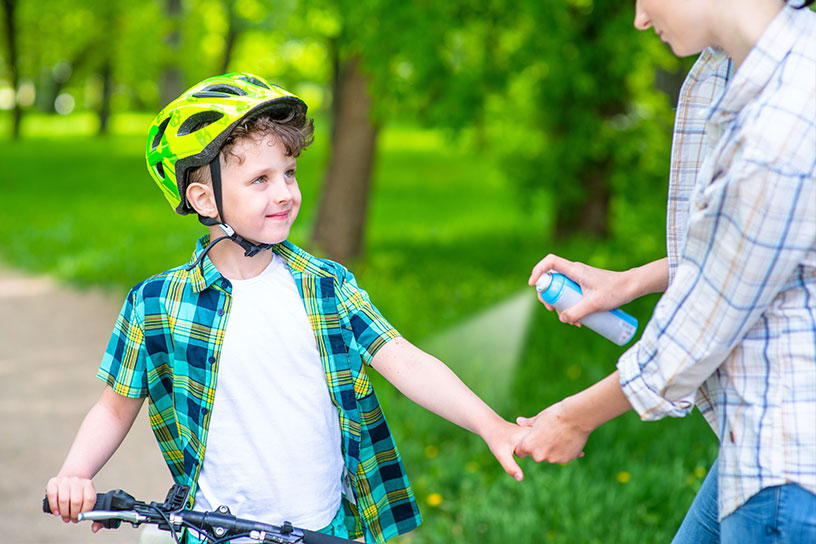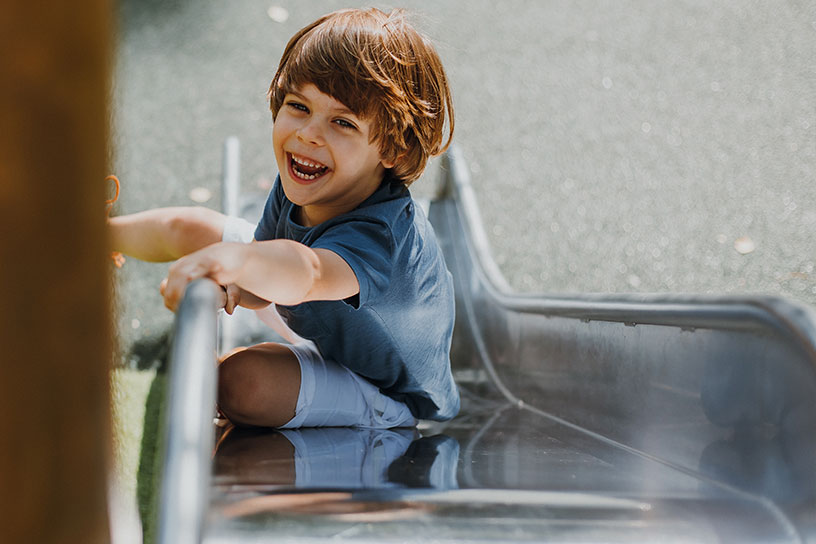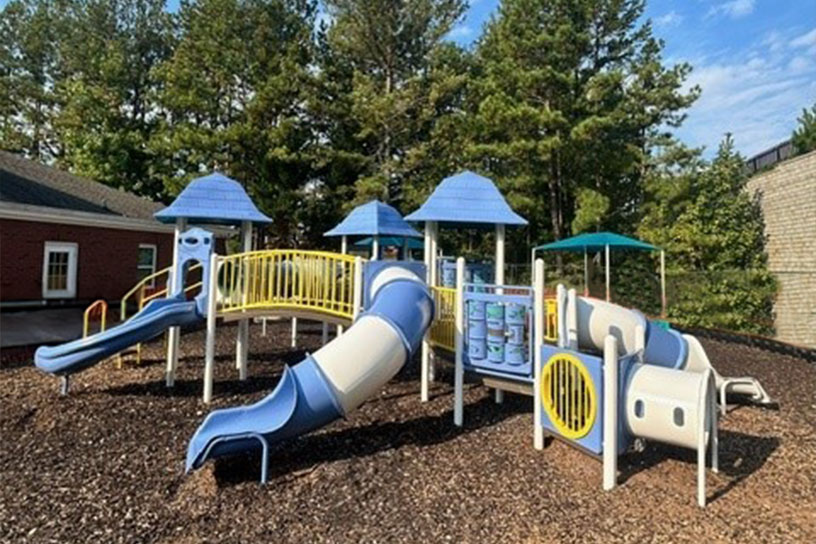At Playground Guardian, we focus on ensuring that playgrounds are structurally sound and free of hazards for children at play. But there are a number of other risks that children face on the playground, including the sun.
If you manage a public playground, we highly recommend posting signage on-site to spark conversations about playground safety and keep our children safe. If you’re not sure where to start when creating your rules, check out our top 10 sun safety guidelines for schools and public playgrounds.
1. Encourage Children to Wear Sunscreen
It may sound obvious, but sunscreen is one of the best ways to protect children from the harmful effects of the sun when playing outdoors. Encourage parents to choose an SPF 30+ broad spectrum sunscreen that protects against both UVA and UVB rays. Sunscreens with zinc oxide or titanium dioxide may offer better protection because they create physical barriers on the skin. While spray sunscreens may seem easier, we don’t recommend them because they are difficult to apply evenly.
Set aside a few minutes before outdoor play for children to apply their sunscreen (or get help from a parent or teacher). It’s best to apply 15-30 minutes before heading outside – and be sure to reapply every two hours! While applying sunscreen may be a minor annoyance, it is an effective way to prevent sun damage that can cause skin cancer later on in life.
2. Avoid Surface Burns from Hot Playground Equipment
If your playground features materials that conduct heat (like metal or rubber), children at play may be at risk of burns on hot days. When the hot sun beats down on your playground all day long, it can heat up surfaces and cause skin damage, blisters, and scarring.
The best way to reduce the risk of burns is to design your playground with materials that don’t hold as much heat. Here are a few sun safety guidelines for schools and playgrounds to consider when designing or upgrading a play space:
- Update metal slides to plastic (or coat them with a light-colored, heat-resistant product)
- Avoid dark colors on plastic swings and slides
- Opt for light-colored surfacing under your playground equipment
- Encourage children to wear appropriate clothing for the playground (including shoes)
3. Prevent Eye Damage on the Playground
While preventing skin damage is one of the most obvious sun safety guidelines for schools and public playgrounds, preventing eye damage is perhaps one of the most overlooked guidelines. Metal equipment, concrete areas surrounding your playground, and even snow can reflect the sun’s bright rays and cause eye damage (especially for children with light-colored eyes).
But, encouraging sunglasses on the playground can be a loaded topic. Some parents worry about them breaking or causing further injury on the playground. And, many parents may opt for a strap/drawstring style that stays in place better but can also present entanglement risks.
If you do recommend sunglasses on your playground, encourage parents to opt for plastic lenses with UVA/UVB protection. All sunglasses with straps should be built to “break away” under tension. If you don’t feel comfortable recommending sunglasses on the playground, offering shade (through trees or other equipment) on your playground is even more important.

4. Provide Access to Water
Outdoor play can cause children to get dehydrated quickly, so providing easy access to water is key to sun safety for kids. Many school playgrounds have a water fountain close by for children to use. If your playground doesn’t have easy access to water, encourage children to bring a water bottle and provide a safe place for storage outside of the playground to avoid tripping hazards.
5. Create Adequate Shade
Adding shade to your playground with sun sails, canopies, or even trees is one of the best ways to keep children safe in the sun. Not only can shade help prevent heat exhaustion and sunburns, but it can extend the lifetime of your playground equipment. When choosing your shade structures, opt for pieces that encourage ventilation to further encourage airflow and cool your playground down.
6. Always Supervise Children at Play
Providing appropriate supervision is perhaps the most important of our sun safety guidelines for schools and public playgrounds. Children don’t have the same bodily awareness that adults do and may continue to play even if they aren’t feeling well. Having active supervision is the best way to prevent heat exhaustion before it becomes a serious issue.
You’ll also want to ensure that any playground supervisors are aware of the key signs of heat stroke and heat exhaustion, like:
- Heavy sweating
- Headaches and body cramps
- Dizziness, tiredness, or weakness
- Nausea and vomiting
- Fainting
If you believe a child is suffering from heat stroke or heat exhaustion, it is crucial to get them immediate medical care.
7. Be Aware of Special Medical Needs
From autism and sensory processing disorders to migraines, the sun can exacerbate a variety of health issues. While children’s medical records are confidential, encouraging parents to make teachers and other playground supervisors aware of any conditions that may cause sun sensitivities can help keep children at play safe.
8. Avoid Outdoor Play During Peak Sun Hours
Whenever possible, avoid playground play between 10am and 2pm when the sun is at its highest intensity. This can be difficult, as many schools offer recess after lunch or in the early afternoon.
Instead, opt for outdoor play during homeroom as students arrive or at the end of the school day. If the middle of the day is the only possible time to play outdoors, ensure proper shade, time to apply sunscreen, and access to water. And, if you live in an area with very high temperatures, consider having indoor recess on days when the heat index is particularly high.
9. Don’t Be Fooled by Clouds
Just because it looks cloudy outside doesn’t mean you’re safe from the sun’s rays! In fact, up to 80% of UV rays can penetrate through cloud cover. Children and adults alike are often more likely to get a sunburn on a cloudy day because they don’t feel the need to wear sunscreen. Even on cloudy days, it’s important to remember the basics of sun safety for kids!
10. Post Sun Safety Signage
Finally, the most important step is to spread the word about sun safety. Sun safety guidelines for schools and public playgrounds often go overlooked simply because people aren’t aware they exist. Here are a few ways to start the conversation and remind parents, teachers, and children about the importance of sun and heat exposure safety:
- Post bright-colored signage on your playground site
- Offer information sheets for parents
- Offer training sessions for teachers and other playground supervisors
- Host a sun safety fair or awareness day (a perfect opportunity to give out free sunscreen samples, water bottles, or sunglasses)
Use these tips to create your own sun safety guidelines and help us keep children safe while playing in the sun!





